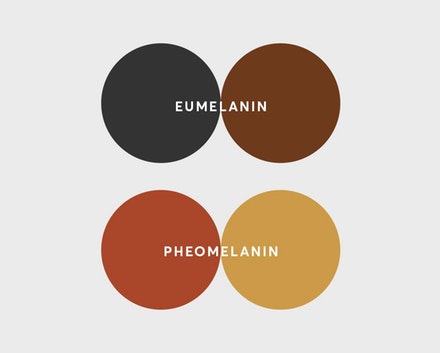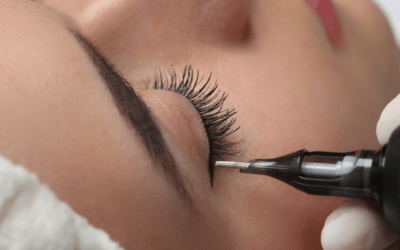When it comes to hair colour, nothing is as simple as black and white. Reaching your perfect shade is a complex process indeed. Here’s why.
Hair colour is the pigmentation of hair follicles due to two types of melanin: eumelanin and pheomelanin. Generally, if more eumelanin is present, the colour of the hair is darker; if less eumelanin is present, the hair is lighter. Levels of melanin can vary over time causing a person’s hair colour to change, and it is possible to have hair follicles of more than one colour on the same person.
Natural hair
Natural hair has a colourless cuticle. The pigments are in the cortex.
The different concentrations of varying melanin pigments determine our natural hair colour and create different natural levels and shade directions. The levels vary from 2 – 10, with 2 being the darkest and 10 representing the lightest level.

Pheomelanin colours hair orange and red. All humans have some pheomelanin in their hair. Eumelanin, which has two subtypes of black or brown, determines the darkness of the hair color. A low concentration of brown eumelanin results in blond hair, whereas a higher concentration of brown eumelanin results in brown hair. High amounts of black eumelanin result in black hair, while low concentrations result in white hair.
Natural white hair
Hair’s age is also reflected in natural hair colour. When melanocytes stop working they’re not producing any pigments. The hair grows colourless, becoming white rather than grey. The grey appearance comes from the combination of naturally coloured and white hair.
What happens to pigments during hair colouring?
Pheomelanin is more bio-chemically stable than black eumelanin, but less bio-chemically stable than brown eumelanin, so it breaks down more slowly when oxidised. This is why bleach gives darker hair a reddish tinge during the colouring process. As the pheomelanin continues to break down, the hair will gradually become red, then orange, then yellow, and finally white.
Every hair is unique and different. Several factors may influence the final colour of the hair following the colouring process:
- For semi-permanent and demi-permanent colour, the final colour is a blend of the natural colour of the hair and the dye colour.
- Bleached hair will often require pre-pigmentation before a colour application. Dyeing bleached hair brown can result in grey or very ashy (grey sheen) hair.
- Previously colour treated hair can react unpredictably with subsequent colour treatments.
- Previous use of shampoos which deposit a layer of plastic on the hair can block the action of the dye.
- Presence of minerals, salts, chlorine or other contaminants in the water used in the colouring process.
- Certain prescription drugs can alter hair chemistry.
- Colouring dark hair to achieve a desirable shade of blond requires bleaching, followed by a secondary colour treatment. Bleached hair can still have a yellow or coppery shade. A violet-based colour can cancel out yellow tones, and a blue-based shade will cancel out coppery orange.
- Porosity of hair can affect the final shade. Porous hair often absorbs more colour, which sometimes results darker than expected.
All these factors have to be considered and consulted when you decide to embark on a colouring journey and see a hairdresser.
Check out some of our favourite hair colour changes of 2018:
Are you thinking of a hair colour change for 2019? Book a free consultation with one of our hair colourists to find out what’s possible to achieve with your hair, so you can decide on the right way forward.
Have no time to pop in for a consultation? Send us a picture in a private message on Facebook of your current hair in natural light conditions, and a picture from Google or Pinterest on what you’d like to achieve ideally. Our hair colourists will have a look at them, and we’ll get back to you with a price quote and opinion – all free of charge. Bear in mind that if you decide to proceed, an allergy test must be performed 48 hours before the colour appointment.
Love,
Figaro London
PPS: Make sure to follow us on our social media pages for more helpful advice, inspiration and the occasional bargain offers. Here they are: Figaro London’s Official Facebook page, Figaro London Beauty page – focusing on all things beauty and skincare related, Twitter, Instagram, Google+. Looking forward to seeing you there too.
Source of featured image: here.
Source of content: Goldwell Education and Wiki.





